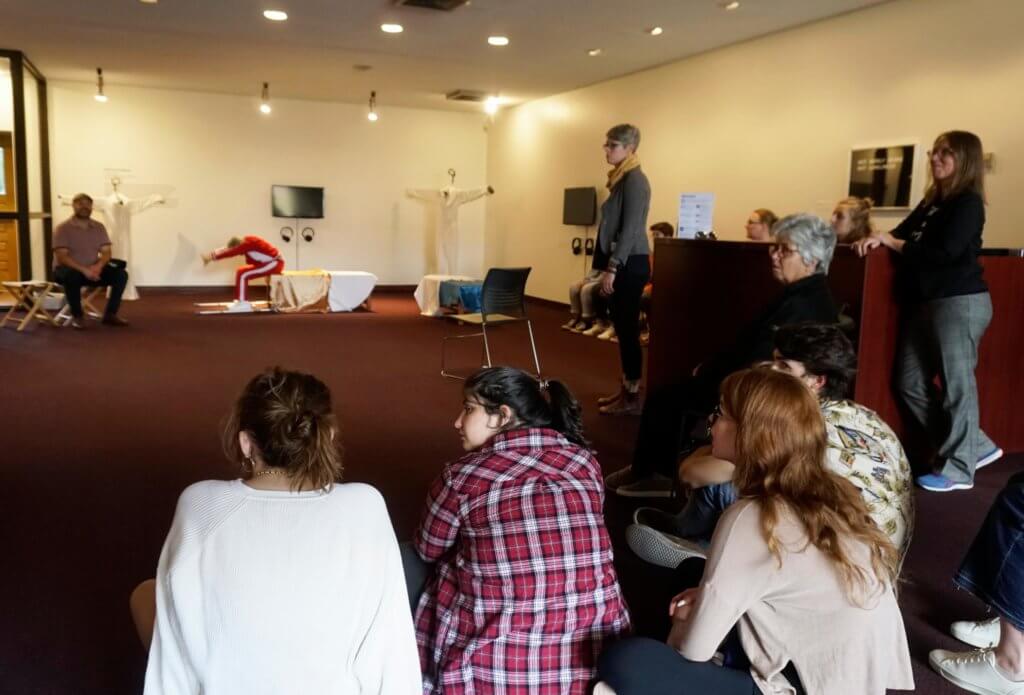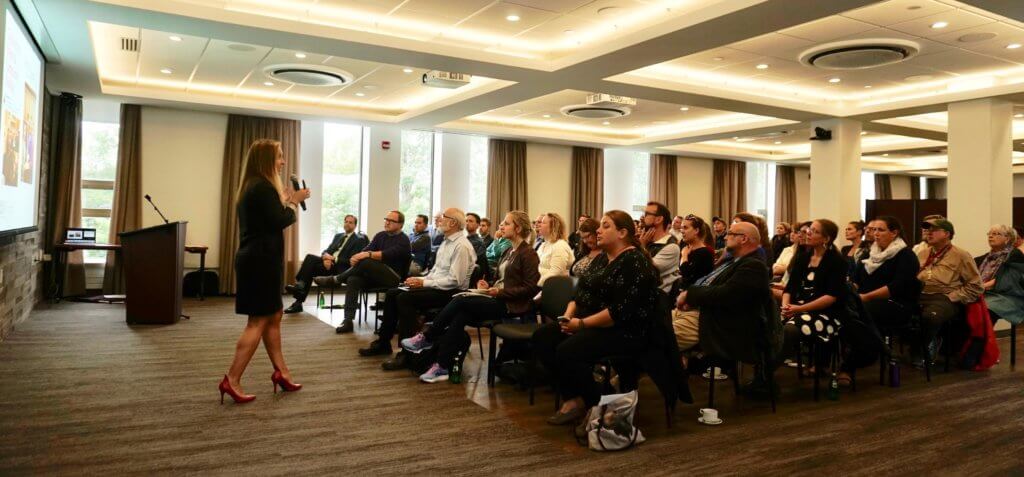The Owens Art Gallery plays host to the work of six international artists

“I hope [the exhibition] will encourage people to think differently about movement,” said Emily Falvey, the director-curator of the Owens Art Gallery, “[and] to be critical of ableism and to see how embracing a less limited understanding of what the human body is, is beneficial for everybody.”
The Owens Art Gallery held the opening vernissage to their new exhibition Automatisme Ambulatoire: Hysteria, Imitation, Performance last Friday night. With six artists involved in the project and work filling every room of the gallery, this exhibit may be the largest the Owens has ever hosted. It was curated by Amanda Cachia, an Australian, American-based independent curator and critic who frequently explores the theme of social justice.
The event opened with speeches from Falvey and Kim Meade, the vice-president of international and student affairs at Mount Allison. ASL interpretation accompanied all of the speeches. “This exhibition has been three years in the making,” said Falvey. “[It] is certainly the first of such scope and international significance.”
“The Owens does an outstanding job of bringing the world to Mount Allison and we are delighted to host this exhibition,” said Meade. “The gallery is a dynamic cultural hub in our region.”
Claire Cunningham, one of the artists involved with the exhibit, was in attendance and said a few words to the large crowd of students and community members. Cunningham’s work is very performance-based and her piece tributary is a live performance that explores impersonation and disability. It was presented over the weekend. When Cunningham leaves Sackville, costumes, props and video will remain to show her work.
According to the exhibition’s description, “ambulatory automatism” is an expression that implies “irresistible urges and movements such as grimaces, tics and gestures that form relationships with corporeal pathologies.” The artists were encouraged to consider ideas of automatisme ambulatoire, hysteria and epilepsy in their work.

Other works on display include Diane Borsato’s video Gems and Minerals, which shows museum guides at the Royal Ontario Museum performing and discussing the museum’s collection and the mining industry in ASL, and a piece by Pauline Boudry and Renate Lorenz, The Right to Have Rights, which is a video of a performer recounting the text of the 1951 Geneva Convention on an empty airport runway in Berlin.
Also included is Brendan Fernandes’ work The Rite, a performance-activated installation where two dancers interact through movement with a cage-like metal sculpture. The piece explores the tension and power dynamics of stillness and sitting.
Upstairs was Help/What/The New York Times, Every Ocean Hughes’ mixed-media installation featuring balloons and glassware. Next to it was another mixed-media installation by the collective My Barbarian, made up of Malik Gaines, Jade Gordon and Alexandro Segade. The piece, called Hystera Theater, involved large banners on the wall, as well as music and film.
“It’s difficult to interpret contemporary art because it’s still fresh and different and a little odd,” said Cassidy Long, a first-year bachelor of arts student. “I feel like it can definitely hit where it hurts [with] the topics that we kind of ignore to save ourselves from anxiety and stress.”
Jack Symonds, a third-year fine arts student, enjoyed the work but also struggled to completely understand it. “A lot of these things are otherworldly in a way to most people who wouldn’t understand,” he explained. “But the art exhibit is trying to bridge the gap so that we can try to understand that which we don’t.”
“I’m super happy to see more efforts to include disabled artists and to incorporate disability into the art gallery,” said Emily Shaw, a third-year fine arts student. “I think it’s very important especially considering Mount Allison’s history and current state as a place that isn’t accessible to [everyone].”
Art history professor Dr. Anne Koval was impressed by the show. “For the first time, the whole gallery is activated with one show,” she said. Understanding that not everyone finds it easy to understand contemporary art, she encouraged visitors to visit multiple times: “It delivers more the more time you spend with it.”
The exhibition will run until November 6.





